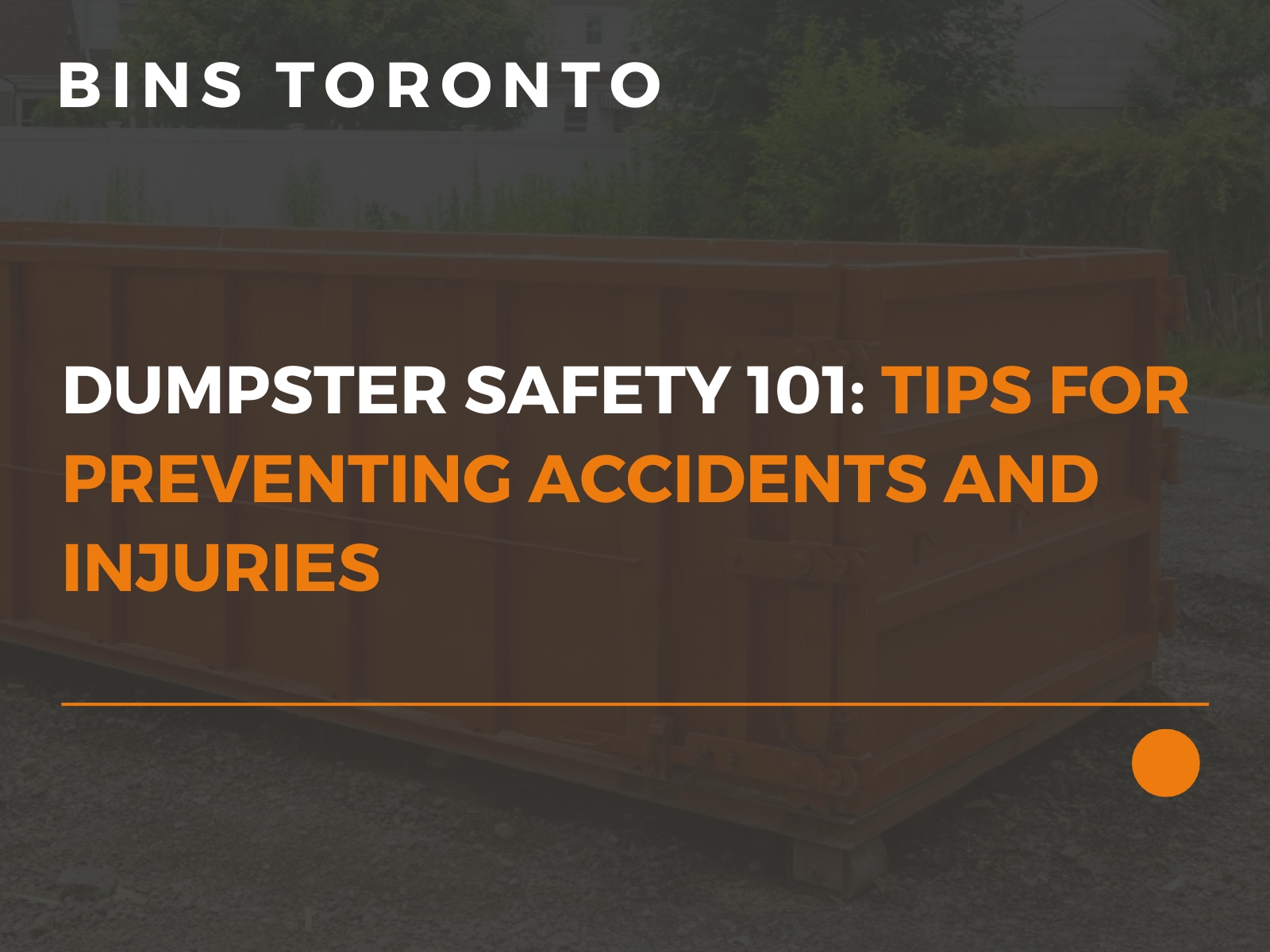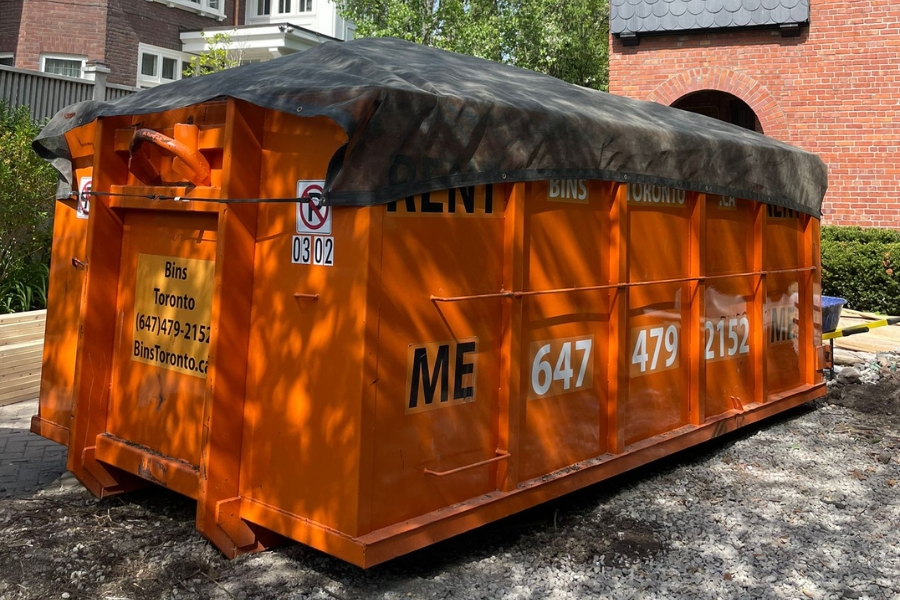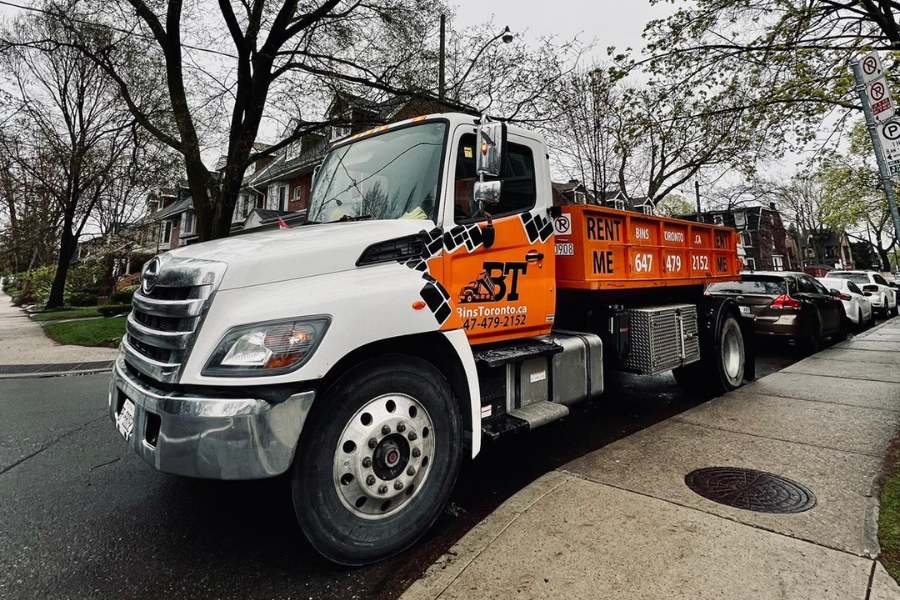

Premier Bin rental Service in Toronto and the GTA

February 20, 2024
Welcome to our comprehensive guide to dumpster safety! At Bins Toronto, we take safety seriously when it comes to handling dumpster bins. Proper precautions and protocols are crucial to prevent accidents and injuries during waste management processes. In this article, we will provide you with essential tips to ensure a safe environment when working with dumpster bins. Whether you’re renting a dumpster bin for a home renovation project or a construction site, these safety guidelines will help you minimize risks and maintain a secure area. Our team at Bins Toronto is committed to delivering reliable and safe bin rentals that meet your needs.
Proper placement of dumpster bins is paramount when it comes to ensuring the safety of both workers and bystanders. At Bins Toronto, we understand the significance of placing dumpster bins securely, considering various factors such as proximity to buildings, traffic, and pedestrian pathways.
Following these guidelines will help maintain a safe environment around dumpster bins, reducing the risks associated with improper placement.
Ensuring the safety of individuals and minimizing the risk of accidents and injuries is paramount when working with dumpster bins. To create a safe working environment, it is crucial to have the necessary safety equipment in place. The following are the essential safety gear that should be used when handling dumpster bins:
By utilizing the appropriate safety equipment, you can mitigate the risks associated with working around dumpster bins. Remember, safety should always be a priority in waste management operations.

Proper loading and unloading techniques are crucial for maintaining a safe working environment around dumpster bins. By following these step-by-step procedures, you can minimize the risk of accidents or injuries while efficiently managing waste disposal.
By adhering to these safe loading and unloading procedures, you can protect yourself, your team, and others in the vicinity, ensuring a secure working environment for everyone involved in dumpster bin rental and waste management.
When it comes to managing dumpster bins, special care must be taken when dealing with hazardous materials. It is crucial to prioritize the safety of both people and the environment. This section will provide essential guidelines for identifying, containing, and disposing of hazardous waste properly.
Before disposing of any waste material in a dumpster bin, it is essential to accurately identify if it is hazardous. Hazardous waste can include substances that are flammable, toxic, corrosive, or reactive. This can encompass chemicals, batteries, paints, solvents, pesticides, or even certain types of electronic waste.
To determine if a substance is hazardous, consult the Material Safety Data Sheet (MSDS) provided by the manufacturer or refer to the relevant regulatory guidelines. If in doubt, it is always better to err on the side of caution and consider the waste as hazardous.
Containing hazardous waste within the dumpster bin is critical to prevent leaks or spills that could harm individuals or contaminate the environment. Here are some key steps to ensure proper containment:
Disposing of hazardous waste correctly is crucial for ensuring compliance with safety regulations and minimizing environmental impact. Follow these guidelines for proper disposal:
By following these guidelines, you can ensure the safe handling and disposal of hazardous materials in dumpster bins. At Bins Toronto, we do not allow hazardous waste to be disposed of in our garbage bin rentals.

In this article, we have explored important safety considerations and best practices for working with dumpster bins.
By following these tips, you can create a safer workplace and minimize the risk of accidents or injuries. Take note of the guidelines for proper dumpster bin placement to ensure secure positioning that prioritizes the safety of both workers and bystanders. It is also crucial to equip yourself and your team with the necessary safety equipment when working with dumpster bins. Wearing gloves, eye protection, and reflective vests will help minimize the chances of accidents and injuries during waste management. Additionally, remember to follow safe loading and unloading procedures to maintain a secure working environment. By carefully following step-by-step protocols, you can maximize efficiency while prioritizing safety. Finally, when handling hazardous materials in dumpster bins, it is essential to be aware of the additional precautions needed. Proper identification, containment, and disposal methods for hazardous waste should be meticulously followed to ensure compliance with safety regulations.
Looking to rent dumpster bins in the Greater Toronto Area? Contact us today to choose from our range of four different bin sizes. Our reliable bin rental service will provide you with the necessary equipment to facilitate efficient waste management while maintaining a safe working environment.

 The Environmental Impact of Proper Waste Disposal: Why Choosing the Right Dumpster...
The Environmental Impact of Proper Waste Disposal: Why Choosing the Right Dumpster...